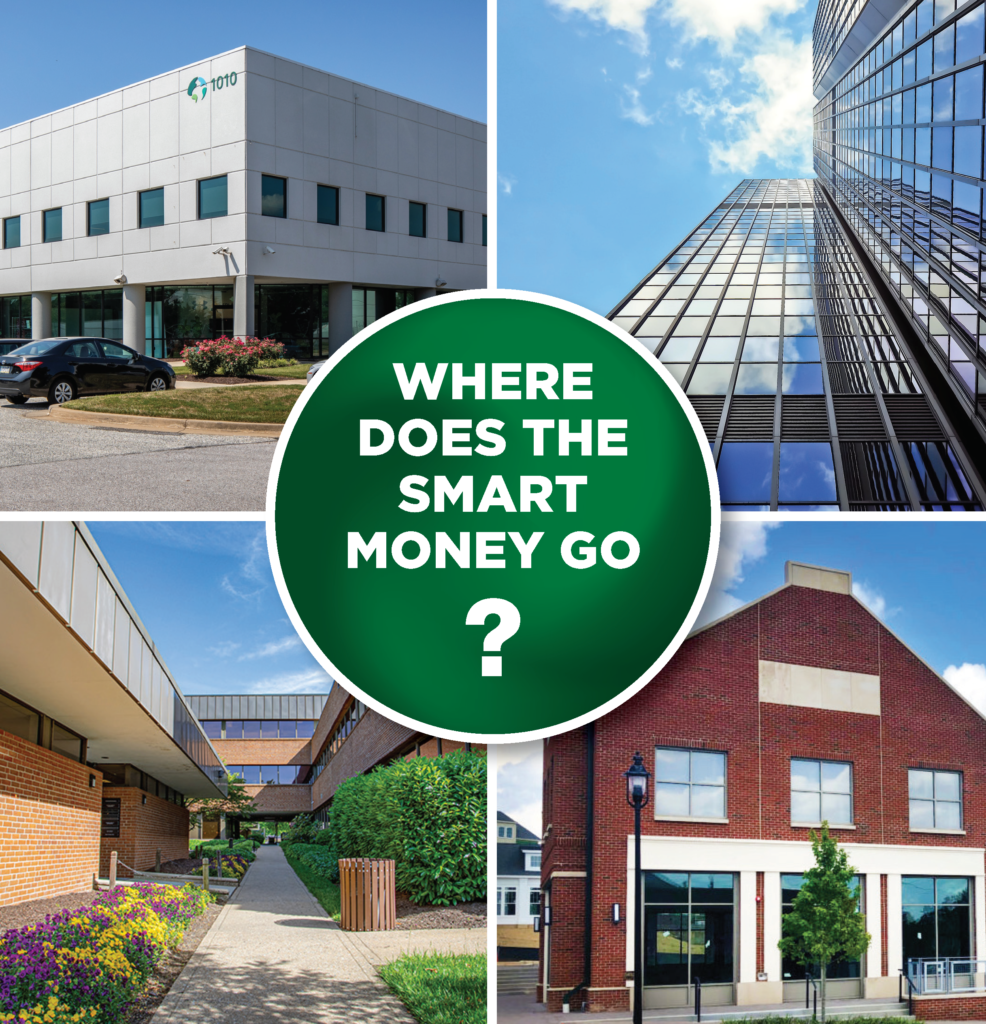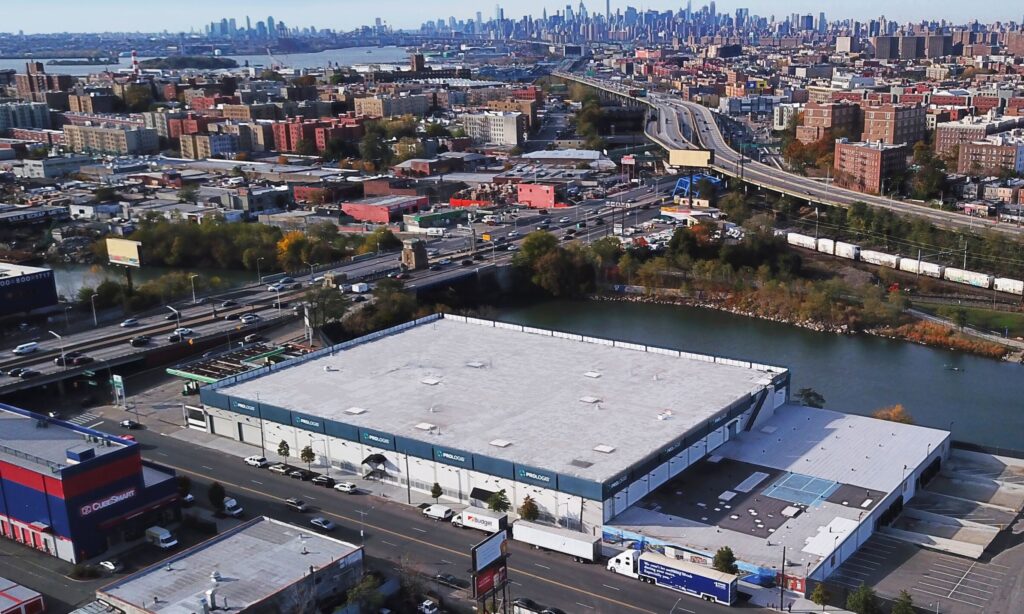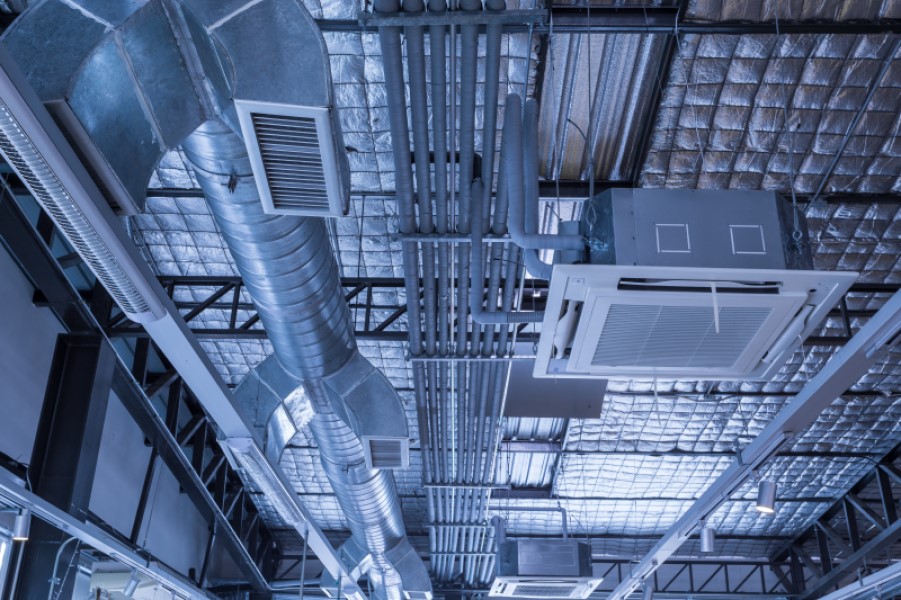Investors, landlords weigh opportunities, uncertainties, necessary pain in COVID-19 economy

When a once-in-a-century pandemic derails the economy, upends traditional work arrangements and fuels uncertainty about the future, where does the smart money go in commercial real estate to buffer companies against losses, seize market opportunities and maybe secure a competitive advantage?
With all the turbulence that 2020 has generated, three months still remaining in this year and a federal election generating one extra layer of tumult, there are no absolute answers. But some industry experts offered their best insights on the wisest financial paths forward.
INDUSTRIAL BOOM
The biggest market opportunities to emerge in 2020 clearly have been in industrial properties. Already a thriving sector in Maryland and beyond, industrial received a boost from the mid-pandemic spike in online
shopping.
“U.S. e-commerce penetration jumped to more than 25 percent in April 2020 from 15 percent at year-end 2019,” said Danielle Schline, Prologis Vice President, Market Officer for Baltimore/DC. “The world’s largest e-commerce company has increased its footprint in Maryland by 50 percent in the first half of 2020 alone.”
Within Prologis’s portfolio, e-fulfilment operations accounted for nearly 40 percent of new leasing in March and April. In addition to heightened online sales of groceries and consumer goods, other trends are strengthening the sector. Those include expansions within the bioscience sector, reshoring of some manufacturing and increased interest among many sectors in maintaining more inventory. Prologis projects that inventories could increase 5-10 percent, creating the need for an additional 285-570 million square feet of warehouse space.
With historically low industrial vacancy rates, the market in the Baltimore-Washington corridor is particularly strong and that has kept rental rates growing and limited concessions, Schline said. “The land-constrained nature of the Baltimore-Washington corridor and resulting tight construction pipeline will enable this market to sustain strong fundamentals.”
Current market conditions are also spinning off other opportunities.

“One thing that industrial tenants are saying is they don’t need as much office as they once did,” said Taylor Fields, Vice President of Leasing at Knott Realty Group. “Instead of needing 5,000 square feet of office within a 50,000 square foot warehouse, now I am hearing they need 1,500 to 2,000 square feet because a lot of their people can work remotely. That is going to help keep costs down for us as a landlord.”
More prospective tenants are seeking warehouses that aren’t as deep but have more loading docks “because they are not racking and storing product for as long. They are moving product in and out quickly,” Fields said.
And many e-commerce companies are seeking last-mile distribution centers close to major population centers. That trend is fueling the growth of Prologis’s Last Touch facilities on sites that might not normally contain warehouses.
It has prompted Amazon to enter deals to create fulfillment centers in several former department store spaces. And it has fueled speculation that empty or underperforming big box or junior box buildings could find a new purpose and value.
DESERTED OFFICES
In the office sector, smart-money moves focus more on minimizing owners’ financial pain and maximizing their leasing opportunities.
The exodus of workers from office buildings in March has left owners, operators and brokers to puzzle over how tenants’ space requirements, design preferences and location choices might change long term, and how those changes and the depressed economy could impact their bottom lines.
“Office investors will feel the pain of increased vacancies through most of 2021 and likely into 2022,” said Steven Cornblatt, Principal at Trout, Daniel & Associates.
Pandemic safeguards and heightened, long-term adoption of telework will reduce the number of onsite workers but also increase the space per onsite worker from 150 square feet to 300 square feet, he said. Furthermore, “with unrest and undesirable commutes in many urban centers, demand for CBD office will trail that of suburban office demand.”
To retain and attract tenants, building owners will need to incentivize prospective occupiers with improvements and hygiene amenities, including transparent barriers around work spaces, heightened cleaning protocols that include electrostatic spray, voice-activated elevator controls, touchless suite entry systems, fully enclosed restroom stalls and sophisticated air purifcation systems, Cornblatt said.
In a report entitled “Using Capital Improvements to Create Competitive Advantage in the COVID-19 Era,” the NAIOP Research Foundation this summer reviewed products and upgrades that could address coronavirus issues and tenant concerns, and discussed processes for determining what upgrades would be appropriate in different properties.
Capital improvements “are not a panacea” for disease concerns and market challenges, the report states. However, “commercial property owners should not dismiss emerging technologies as a passing fad. Sophisticated HVAC systems, UV lighting, antimicrobial building materials and touchless technologies are all here to stay as tenants seek out ways to provide their employees with healthier work environments. The challenge for property owners lies in determining when and how to invest.”

In the short term, owners may have to accept that those investments will not generate profits.
“As such improvements and amenities will add to the operating budget, financial performance and NOI will suffer some,” Cornblatt said. “In order to be competitive and survive, the answer is not necessarily to increase rents to offset the additional expense. The unfortunate answer is that landlords who want to compete will need to take their lumps in the form of reduced NOI. They’ll need their lenders to cooperate as well with forbearance and other types of leniency. The good news here is that all of this is temporary and in time we will all get through this pandemic… We’re in the commercial real estate brokerage and management business. Hope and optimism have always been crucial to our survival and success.”
Property owners and operators should probably be on the lookout for new, third-party certification systems, which verify a property is following COVID-19 safety protocols, and plan to have their properties certified, said Owen Rouse, Vice President of Investment Sales at MacKenzie Commercial
Real Estate. Rouse anticipates such certifications will provide some of the same benefits that properties experienced by becoming LEED certified.
“The real estate credentialing exercise that the industry went through for LEED certification assured tenants that properties met certain sustainability standards and helped them choose properties that best matched their needs and corporate culture,” Rouse said. “We may see a parallel situation with new, COVID-cleanliness certifications and they may take on even more widespread importance among tenants as companies seek to assure employees and clients that they are making best efforts to address health concerns.”
COVID-19 safety certifications and disease concerns in general could also create fresh interest in certain property types, Rouse said. Low-rise or single-story flex spaces with dedicated entrances from the parking area will likely appeal to individuals looking to avoid the risks of passing through high-traffic common areas in taller office buildings.
“Some out of favor architecture is coming back in vogue again,” he said. “Those older style offices with exterior balconies all of a sudden are looking like desirable, safe spaces in the time of COVID.”
Create competitive advantage through select building improvements

Deciding what building improvements to make in the midst of a pandemic and economic downturn is difficult. The NAIOP Research Brief “Using Capital Improvements to Create Competitive Advantage in the COVID-19 Era” offers some insights to guide your decisions.

Prioritize improvements that advance multiple objectives – reducing disease spread, increasing operational efficiency, and addressing tenant concerns about sustainability/corporate responsibility.

Do not dismiss emerging technologies as passing fads. Sophisticated HVAC systems UV lighting, antimicrobial building materials and touchless technologies are all here to stay